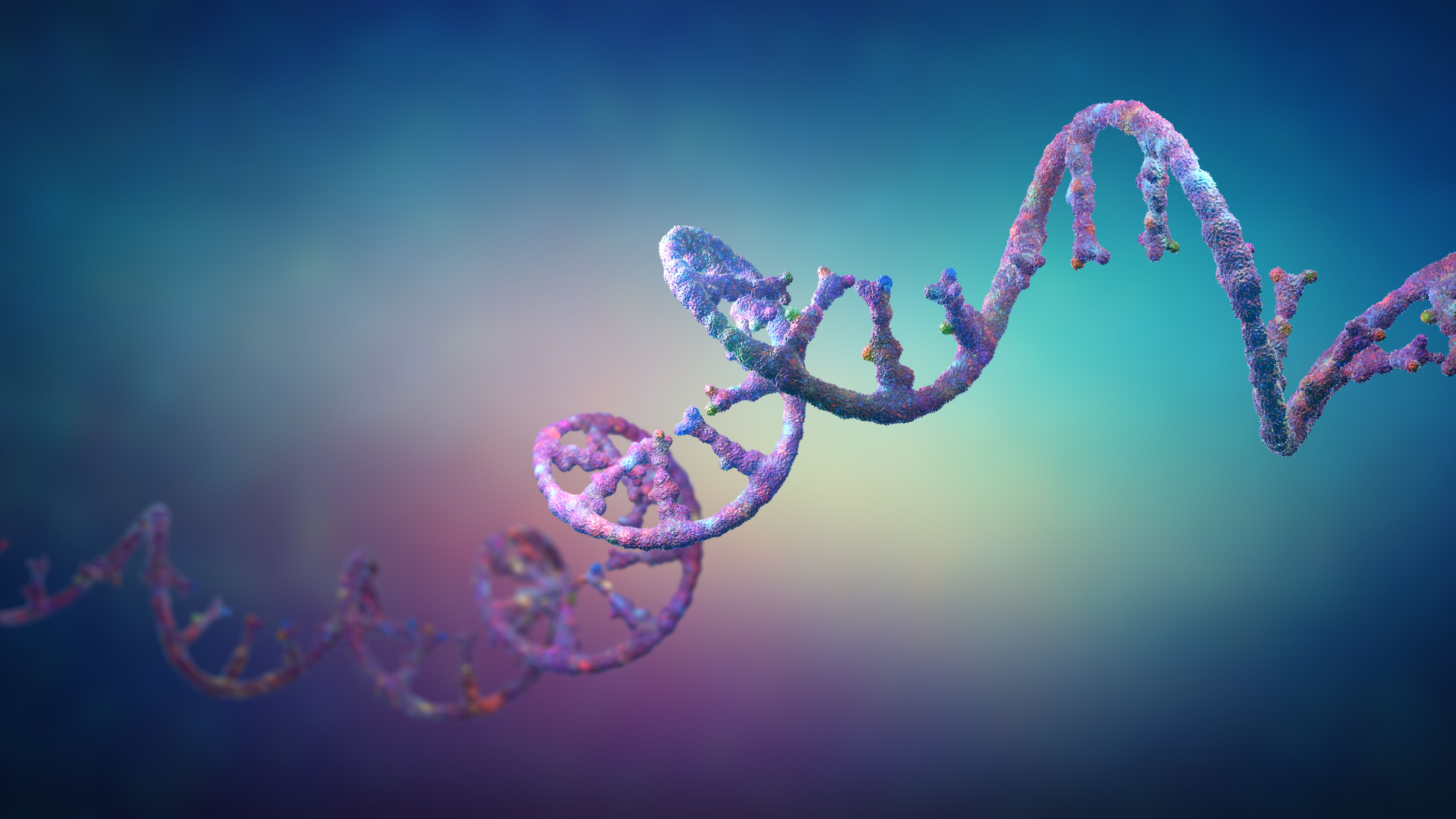Removing Double-Stranded RNA Impurities Using Chromatography
Researchers from Agency for Science, Technology and Research (A*STAR) in Singapore reviewed the chromatography techniques used to remove double-stranded RNA impurities during messenger RNA (mRNA) therapeutics production. Their findings were published in the Journal of Chromatography A.
Ribonucleic acid strands consisting of nucleotides - 3d illustration | Image Credit: © Christoph Burgstedt - stock.adobe.com

Messenger RNA, or mRNA, is a molecule containing instructions or recipes that direct cells to make a protein using natural machinery (2). A type of single-stranded RNA (ssRNA), mRNA has various clinical applications, including contributing to vaccines against infectious agents and cancers, protein replacement therapies, treatment of genetic disorders, regenerative therapeutics, and immunotherapies.
The clinical success of mRNA-based COVID-19 vaccines has led to unprecedented investment in developing RNA-based therapeutics. The potential of mRNA-based therapeutics to transiently express almost any desired protein while avoiding the adverse viral and DNA-based nucleic acid delivery approaches, along with potential for rapid advancement from development to clinical manufacturing, can help different hypothetical applications become realities.
However, the in vitro transcription (IVT) process, which is used to synthesize mRNA, can result in the generation of a byproduct, double-stranded RNA (dsRNA). This can trigger innate immune activation and reduce translation. While efforts have been made to optimize IVT synthesis to minimize dsRNA formation, these impurities cannot yet be fully resolved. As such, there is urgency for a downstream purification strategy to be developed for tackling these unresolved dsRNA impurities. However, according to the study authors, there have not been any previous reviews with primary focus on strategies to remove dsRNA post-synthesis at the time of publication.
In this review, the scientists discuss the use of non-enzymatic (reversed phase-ion pairing chromatography, hydrophobic interaction chromatography, and more) and RNase III enzymatic purification strategies aimed at dsRNA removal. The researchers provided perspectives and discussions on the benefits and drawbacks of the different methods, specifically regarding scalable manufacturing, and provide guidance to consider during IVT mRNA production.
"Future studies could focus on examining the immunogenic response elicited by different types of dsRNA and identifying the types that warrant more attention for removal,” the scientists wrote (1). “Before embarking on downstream process development to remove dsRNA, it is crucial to optimize the upstream IVT process first to minimize the generation of dsRNA by-products.”
Before employing downstream process development to remove dsRNA, the scientists concluded that the analyst must optimize the upstream IVT processes first to minimize the generation of dsRNA byproducts. Various new purification strategies have been proposed, but emphasis should be placed on improving current strategies for product recovery and dsRNA removal efficiency, especially when handling longer mRNA transcripts, self-amplifying mRNA (saRNA), or even novel circular RNAs (circRNAs). Additionally, they called for improving the design of purification studies. DsRNA standards or ladders are often used as samples in many dsRNA removal studies, but IVT mixtures should be used to study dsRNA selectivity against the product and other impurities.
Further, they suggest more systematic and thorough comparisons to be made against reversed phase-ion pair chromatography (RPIP) modes of purification. These include examining the mechanism of separation, product recovery, binding capacity, cost-saving, and the nature of dsRNA being removed. Currently, the dot-blot technique, which involves applying a small amount of sample directly onto a membrane, then probing it with a specific antibody or nucleic acid probe to detect a target molecule, is the most common technique for semi-quantitative measurements of dsRNA removal (3). However, this method can prove time-consuming. According to the scientists, future works should consider developing high-throughput and quicker detection methods, such as lateral flow immunoassay or high-performance liquid chromatography (HPLC), to speed up process development for dsRNA elimination.
References
(1) Siew, Y. Y.; Zhang, W. Removing Immunogenic Double-Stranded RNA Impurities Post In Vitro Transcription Synthesis for mRNA Therapeutics Production: A Review of Chromatography Strategies. J. Chromatogr. A 2025, 1740, 465576. DOI: 10.1016/j.chroma.2024.465576
(2) Understanding the Next Wave of Scientific Innovations to Fight Viruses and More. Pfizer 2025. https://www.pfizer.com/science/innovation/mrna-technology (accessed 2025-4-8)
(3) Dot Blot Protocol. Biotechne R&D Systems 2025. https://www.rndsystems.com/resources/protocols/dot-blot-protocol (accessed 2025-4-8)
Common Challenges in Nitrosamine Analysis: An LCGC International Peer Exchange
April 15th 2025A recent roundtable discussion featuring Aloka Srinivasan of Raaha, Mayank Bhanti of the United States Pharmacopeia (USP), and Amber Burch of Purisys discussed the challenges surrounding nitrosamine analysis in pharmaceuticals.
Extracting Estrogenic Hormones Using Rotating Disk and Modified Clays
April 14th 2025University of Caldas and University of Chile researchers extracted estrogenic hormones from wastewater samples using rotating disk sorption extraction. After extraction, the concentrated analytes were measured using liquid chromatography coupled with photodiode array detection (HPLC-PDA).
Silvia Radenkovic on Building Connections in the Scientific Community
April 11th 2025In the second part of our conversation with Silvia Radenkovic, she shares insights into her involvement in scientific organizations and offers advice for young scientists looking to engage more in scientific organizations.






